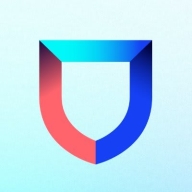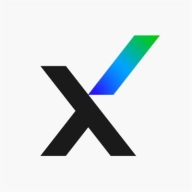


Lacework FortiCNAPP and Trellix Cloud Workload Security compete in the cloud security domain. Trellix Cloud Workload Security appears more favorable due to its robust features, despite Lacework FortiCNAPP's advantages in pricing and support.
Features: Lacework FortiCNAPP provides comprehensive network visibility, automated threat detection, and continuous monitoring for security gaps. Trellix Cloud Workload Security offers advanced threat intelligence, behavior analytics, and in-depth threat insights, focusing on analytics-based threat management.
Ease of Deployment and Customer Service: Lacework FortiCNAPP is noted for its straightforward deployment and quick integration with existing systems, paired with responsive customer service. Trellix Cloud Workload Security may require more setup time but offers extensive support for streamlined implementation.
Pricing and ROI: Lacework offers a competitive setup cost, appealing to budget-conscious buyers while allowing scalable ROI through network automation. Trellix Cloud Workload Security, despite higher initial costs, provides significant ROI through advanced threat detection and analytics, offering a valuable investment for businesses seeking comprehensive security solutions.



SentinelOne Singularity Cloud Security protects cloud workloads, offering advanced threat detection and automated response. It integrates seamlessly with cloud environments and secures containerized applications and virtual machines against vulnerabilities.
SentinelOne Singularity Cloud Security is renowned for its efficiency in mitigating threats in real-time. The platform integrates effortlessly with existing cloud environments, ensuring robust cloud security management with minimal manual intervention. Securing containerized applications and virtual machines, it excels in threat intelligence and endpoint protection. However, improvements are needed in performance during high workload periods, and more integrations with third-party tools and better documentation would be beneficial. Users often find the installation process complex, support response times slow, and the dashboard's navigation unintuitive.
What are the key features of SentinelOne Singularity Cloud Security?In specific industries, SentinelOne Singularity Cloud Security is implemented to safeguard critical data and infrastructure. Organizations in finance, healthcare, and technology depend on its real-time threat detection and automated response to protect sensitive information. Its ability to secure containerized applications and virtual machines is particularly valuable in dynamic environments where rapid scaling is necessary.
Lacework FortiCNAPP provides robust cloud security, combining vulnerability management and multi-cloud insight with user-friendly controls, machine learning detection, and compliance support.
Lacework FortiCNAPP specializes in cloud security by merging machine learning anomaly detection with agent-based vulnerability management to offer detailed alerts and compliance reports. Its comprehensive approach allows continuous monitoring across AWS and Kubernetes, providing insights from an attacker's perspective. The platform offers automation and seamless Slack integration, facilitating collaborative and efficient cloud security management. Users value its ability to handle multi-cloud environments and scan IAC scripts, configurations, and compute nodes across AWS and GCP.
What are the key features?Organizations across sectors leverage Lacework FortiCNAPP for cloud security, focusing on compliance, security posture, and vulnerability management. It is widely used for monitoring AWS and Kubernetes environments, scanning IAC scripts, configurations, and securing compute nodes. It supports multi-cloud security posture management and log ingestion, enabling companies to maintain strong cloud infrastructures without dedicated security layers.
Trellix Cloud Workload Security is a comprehensive security solution designed to protect cloud workloads from advanced threats. It provides real-time visibility and control over cloud workloads, enabling organizations to quickly detect and respond to threats.
The most useful functionality of the solution includes automated threat detection, continuous compliance monitoring, and workload protection. With these features, organizations can ensure their cloud workloads are secure and compliant with industry regulations. Trellix Cloud Workload Security helps organizations reduce the risk of data breaches, protect sensitive data, and ensure compliance with regulatory requirements.
We monitor all Cloud Workload Protection Platforms (CWPP) reviews to prevent fraudulent reviews and keep review quality high. We do not post reviews by company employees or direct competitors. We validate each review for authenticity via cross-reference with LinkedIn, and personal follow-up with the reviewer when necessary.